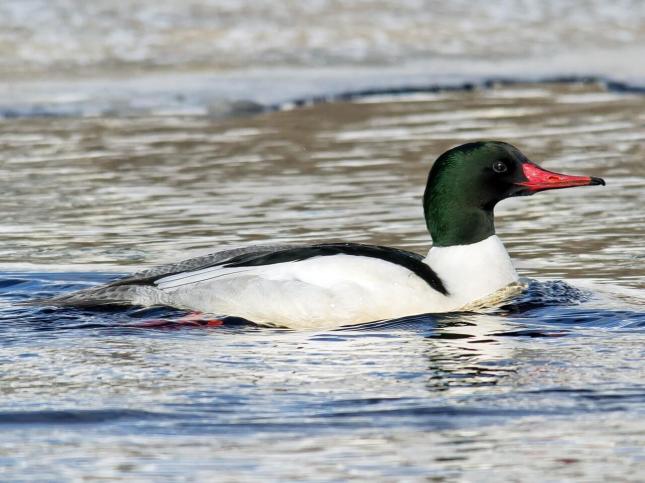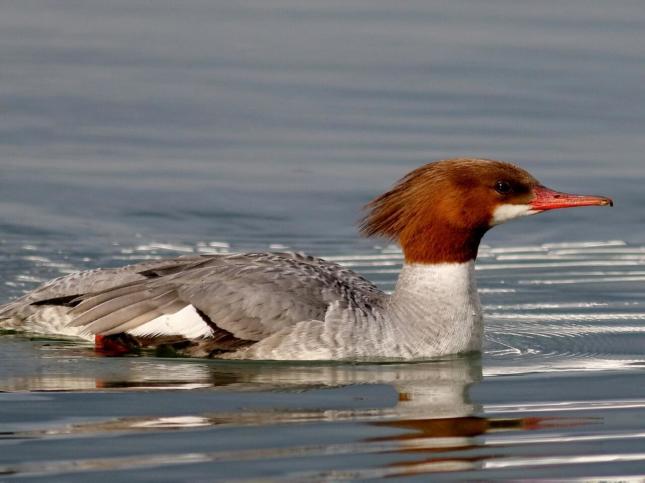

Fun Facts About Common Mergansers
- Common Mergansers are streamlined ducks that float gracefully down small rivers or shallow shorelines. The males are striking with clean white bodies, dark green heads, and a slender, serrated red bill. The elegant gray-bodied females have rich, cinnamon heads with a short crest. In summer, look for them leading ducklings from eddy to eddy along streams or standing on a flat rock in the middle of the current. These large ducks nest in hollow trees; in winter they form flocks on larger bodies of water.
- Common Mergansers are sometimes called sawbills, fish ducks, or goosanders. The word “merganser” comes from the Latin and roughly translates to “plunging goose”—a good name for this very large and often submerged duck.
- Common Mergansers mostly eat fish, but they also eat aquatic invertebrates (including insects, mollusks, crustaceans, and worms), frogs, small mammals, birds, and plants. They forage in clear aquatic habitats such as streams, rivers, lakes, coastal bays, and estuaries. While they mainly hunt in waters less than about 13 feet deep, in the winter they sometimes venture into deeper waters where fish are schooling. They find their prey by sight, often probing sediments and underwater stones with their slender bills, which have sharp serrations for grasping slippery prey.
- Common Mergansers spend much of their time afloat, loafing, fishing, and often sleeping on open water. They may form flocks of up to 75 individuals. They often swim in small groups along the shoreline, dipping their heads underwater to search for prey and then diving with a slight leap. Often when one bird dives in a large group, the others follow the leader and disappear.
- In northern forests Common Mergansers will take up residence in nest boxes near lakes or rivers, as long as the boxes are large with a large opening. Consider putting up a nest box to attract a breeding pair. Make sure you put it up well before breeding season. Attach a guard to keep predators from raiding eggs and young.
- The oldest Common Merganser on record was a female, and at least 13 years, 5 months old. She was banded in Oklahoma in 1938 and found in Wisconsin in 1950.

